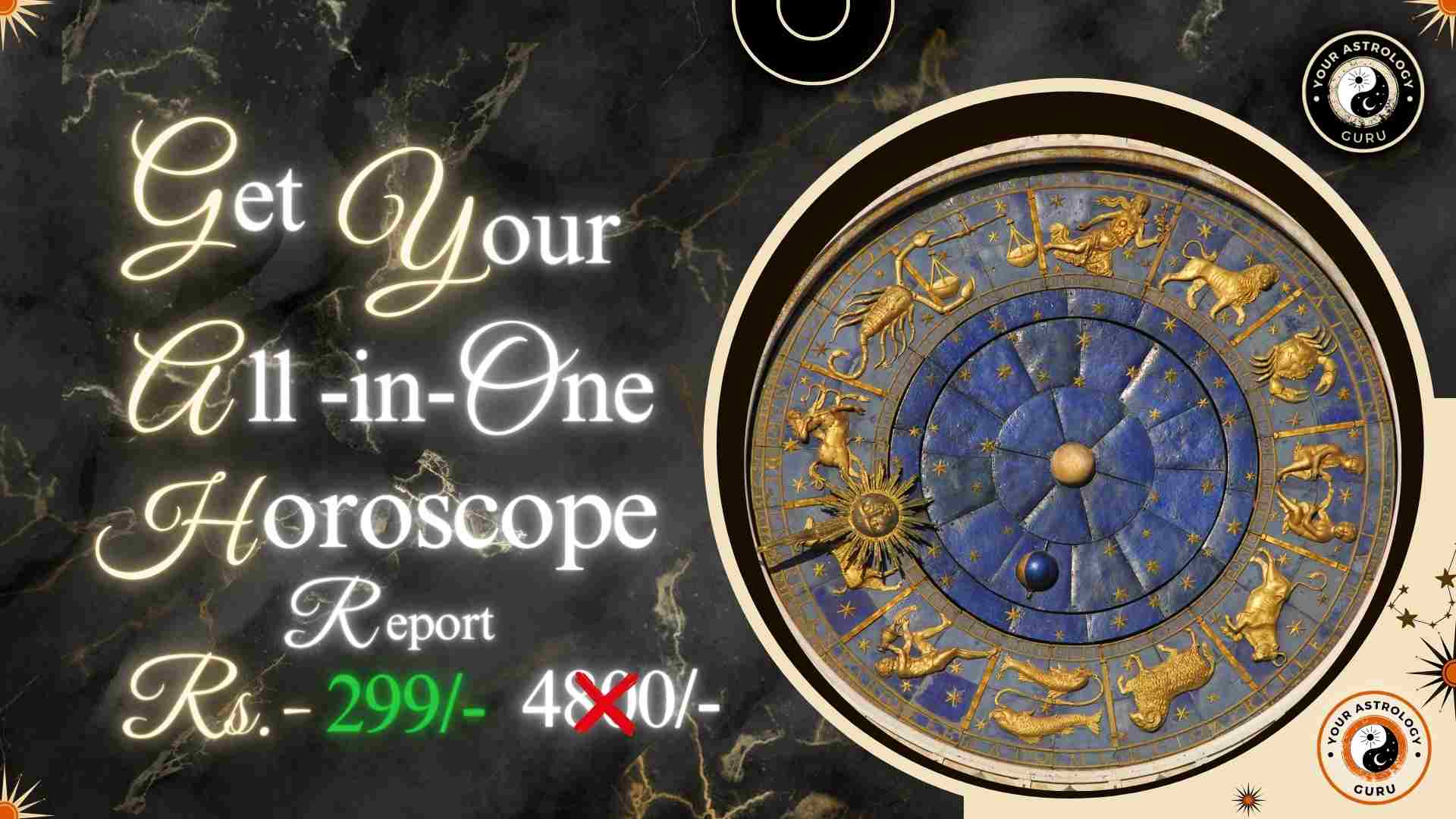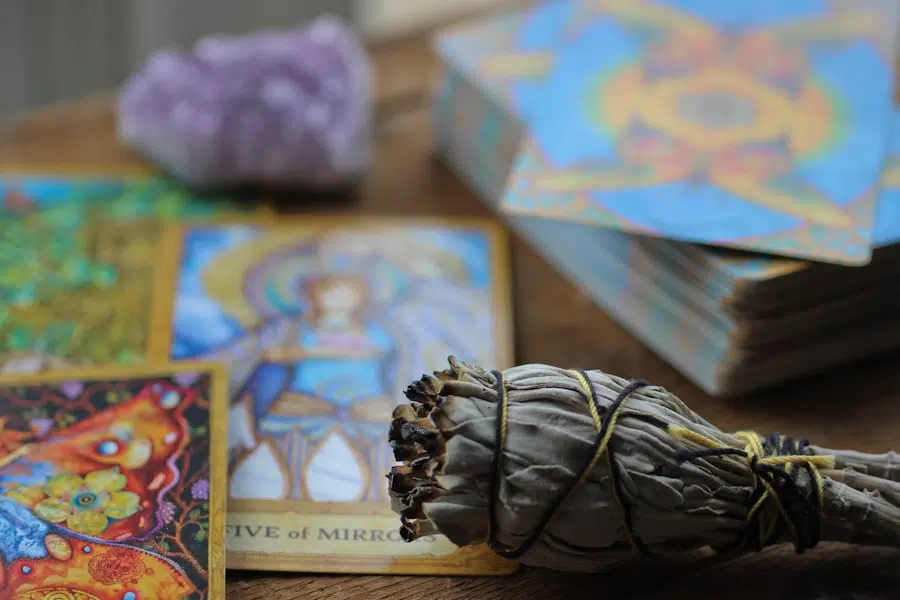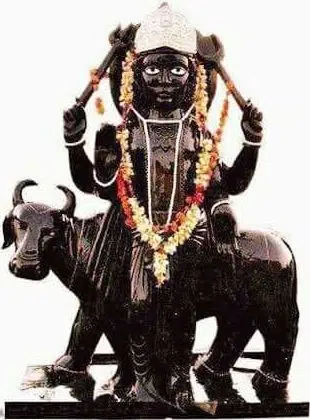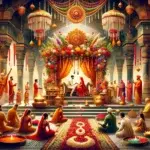Nadi Astrology is an ancient Indian system of astrology that has its roots in the Tamil region of South India. It is believed to have been written by the ancient sages and seers who had the ability to foresee the future. The word “Nadi” means “in search of” in Tamil, and Nadi Astrology is often referred to as “the search for destiny.”
The origins of Nadi Astrology can be traced back to thousands of years ago, and it is said to have been passed down through generations of sages and astrologers. The ancient texts that contain the predictions are written on palm leaves, which are known as “Nadis.” These palm leaves are said to have been written by the sages themselves, and they contain detailed information about an individual’s past, present, and future.
The KP System, also known as Krishnamurti Paddhati, is a branch of astrology that is closely related to Nadi Astrology. It was developed by the Indian astrologer Krishnamurti in the early 20th century. The KP System is based on the principles of Nadi Astrology and uses a unique set of rules and techniques for making predictions. It is known for its accuracy and precision in predicting events and timing.
Table of Contents
Understanding the Significance of the 12 Houses in Nadi Astrology
In Nadi Astrology, the natal chart is divided into 12 houses, each representing a different aspect of life. These houses play a crucial role in determining an individual’s personality traits, strengths, weaknesses, and life events.
The first house, also known as the Ascendant or Lagna, represents the self and one’s physical appearance. It influences a person’s personality, behavior, and overall outlook on life.
The second house represents wealth, possessions, and family. It indicates an individual’s financial status, material possessions, and family relationships.
The third house represents communication, siblings, and short-distance travel. It influences a person’s communication skills, relationship with siblings, and ability to adapt to new environments.
The fourth house represents home, mother, and emotional well-being. It indicates one’s relationship with their mother, their sense of security and stability, and their emotional state.
The fifth house represents creativity, children, and romance. It influences a person’s creative abilities, their relationship with children, and their romantic inclinations.
The sixth house represents health, enemies, and obstacles. It indicates one’s physical well-being, their ability to overcome challenges, and their relationship with enemies or competitors.
The seventh house represents partnerships, marriage, and business relationships. It influences one’s ability to form and maintain relationships, their approach to marriage or partnerships, and their business partnerships.
The eighth house represents transformation, secrets, and inheritance. It indicates major life changes or transformations, hidden aspects of one’s life, and potential inheritances or legacies.
The ninth house represents higher education, spirituality, and long-distance travel. It influences one’s quest for knowledge and wisdom, their spiritual beliefs or practices, and their experiences with long-distance travel.
The tenth house represents career, reputation, and public image. It indicates one’s professional achievements or ambitions, their reputation in society or their chosen field, and their public image.
The eleventh house represents friendships, social networks, and aspirations. It influences one’s ability to form friendships or social connections, their involvement in group activities or organizations, and their aspirations or goals in life.
The twelfth house represents spirituality, isolation, and hidden enemies. It indicates one’s spiritual inclinations or practices, their need for solitude or isolation at times, and potential hidden enemies or obstacles in life.
Decoding the Role of Nakshatras in KP System
Nakshatras are an integral part of the KP System and play a significant role in making predictions. In Vedic astrology, nakshatras are lunar mansions or star constellations that divide the zodiac into 27 equal parts. Each nakshatra has its own unique qualities and characteristics, which influence a person’s personality, behavior, and life events.
In the KP System, nakshatras are used to determine the sub-lord of a planet, which is crucial for making accurate predictions. The sub-lord represents the specific significations of a planet in a particular house and is used to determine the timing of events.
The nakshatra lord, sub-lord, and significators are used in conjunction with other planetary positions and aspects to make predictions. The position of the planets in relation to the nakshatras can provide valuable insights into an individual’s personality traits, strengths, weaknesses, and life events.
Importance of Planetary Aspects in Nadi Astrology
Planetary aspects play a crucial role in Nadi Astrology as they indicate the influence and interaction between different planets in a natal chart. An aspect occurs when two planets are at a specific angular distance from each other. These aspects can be harmonious or challenging, depending on the nature of the planets involved.
In Nadi Astrology, planetary aspects are used to determine the strength and intensity of different areas of life. They can indicate opportunities, challenges, or potential conflicts that an individual may face in various aspects of their life.
For example, a harmonious aspect between Venus and Jupiter can indicate good fortune, abundance, and positive relationships. On the other hand, a challenging aspect between Mars and Saturn can indicate obstacles, conflicts, or delays in achieving one’s goals.
Interpreting planetary aspects requires a deep understanding of the nature and significations of each planet involved. It also involves considering the house placement and nakshatra lordship of the planets to get a comprehensive understanding of their influence.
Nadi Astrology and Its Connection with Karma Theory
Nadi Astrology is deeply connected to the concept of karma, which is the belief that our actions in past lives determine our present circumstances and future destiny. According to karma theory, every action we take has consequences that will manifest in this life or future lives.
In Nadi Astrology, the natal chart is seen as a reflection of an individual’s past karmas and their current life lessons. The positions of the planets, houses, and nakshatras in the chart provide insights into the karmic patterns and challenges that an individual may face.
By understanding their karmic challenges, individuals can gain insight into the lessons they need to learn and the areas of life they need to focus on for personal growth and spiritual evolution. Nadi Astrology can help individuals understand why certain events or situations are occurring in their lives and provide guidance on how to navigate them.
Nadi Astrology also offers remedies or solutions to help individuals overcome their karmic challenges. These remedies can include performing specific rituals, wearing gemstones, chanting mantras, or engaging in acts of service or charity. The purpose of these remedies is to balance the karmic energies and create positive changes in one’s life.
How to Read a Nadi Chart: A Step-by-Step Guide
Reading a nadi chart requires a systematic approach and a deep understanding of the various components and techniques used in Nadi Astrology. Here is a step-by-step guide on how to read a nadi chart:
1. Determine the Ascendant: The Ascendant or Lagna is the starting point of the nadi chart. It represents the self and one’s physical appearance. To determine the Ascendant, look for the sign rising on the eastern horizon at the time of birth.
2. Identify the Planets: Identify the positions of the planets in the chart. Each planet represents different aspects of life and has its own significations. Pay attention to the house placement and nakshatra lordship of each planet to understand their influence.
3. Analyze the Houses: Study the 12 houses in the chart and their significations. Each house represents a different aspect of life and influences specific areas such as career, relationships, health, and spirituality. Consider the planets placed in each house and their aspects to get a comprehensive understanding of the individual’s life events.
4. Determine the Sub-lords: Determine the sub-lords of each planet in the chart. The sub-lord represents the specific significations of a planet in a particular house and is crucial for timing events. Use the KP System rules and techniques to determine the sub-lords accurately.
5. Interpret Planetary Aspects: Analyze the planetary aspects in the chart to understand how different planets interact with each other. Consider both harmonious and challenging aspects to get a comprehensive understanding of an individual’s strengths, weaknesses, and potential challenges.
6. Consider Nakshatra Lordship: Pay attention to the nakshatra lordship of each planet in the chart. The nakshatras provide valuable insights into an individual’s personality traits, strengths, weaknesses, and life events.
7. Analyze Dasha Periods: Consider the dasha periods or planetary cycles in the chart. Dasha periods indicate the timing of events and can provide valuable insights into an individual’s life events and experiences.
8. Provide Remedies: Based on the analysis of the nadi chart, provide remedies or solutions to help individuals overcome their challenges and improve their lives. These remedies can include performing specific rituals, wearing gemstones, chanting mantras, or engaging in acts of service or charity.
Nadi Astrology and Its Predictive Power: What to Expect?
Nadi Astrology is known for its predictive power and accuracy in making predictions. The ancient texts of Nadi Astrology are said to contain detailed information about an individual’s past, present, and future, which can be accessed through the process of thumb impression matching.
The predictions made through Nadi Astrology are based on the principles of karma theory and the analysis of the natal chart. By understanding an individual’s past karmas and their current life lessons, Nadi Astrology can provide insights into the future events and challenges that an individual may face.
Nadi Astrology can predict major life events such as marriage, career advancements, financial gains or losses, health issues, and spiritual growth. It can also provide guidance on the timing of these events, helping individuals make informed decisions and take advantage of favorable periods.
Examples of accurate predictions made through Nadi Astrology are abundant. Many individuals have reported experiencing accurate predictions about their personal and professional lives, which have helped them make important decisions and navigate challenging situations.
The Role of Remedies in Nadi Astrology: A Comprehensive Overview
Remedies play a significant role in Nadi Astrology as they are believed to balance the karmic energies and create positive changes in one’s life. The purpose of remedies is to help individuals overcome their karmic challenges and improve their overall well-being.
There are various remedies used in Nadi Astrology, including performing specific rituals or prayers, wearing gemstones or talismans, chanting mantras or prayers, engaging in acts of service or charity, and practicing meditation or yoga.
The choice of remedy depends on the specific challenges or issues that an individual is facing. For example, if someone is experiencing financial difficulties, they may be advised to perform a specific ritual or wear a gemstone that is associated with wealth and abundance.
It is important to note that remedies in Nadi Astrology are not meant to change one’s destiny or alter the course of events. Instead, they are meant to help individuals navigate their challenges and improve their lives by creating positive changes in their thoughts, actions, and attitudes.
Common Misconceptions about Nadi Astrology: Debunking the Myths
Nadi Astrology, like any other system of astrology, is often surrounded by misconceptions and myths. Here are some common misconceptions about Nadi Astrology and the reasons why they are inaccurate:
1. Nadi Astrology is fatalistic: One of the biggest misconceptions about Nadi Astrology is that it is fatalistic and does not allow for free will or personal agency. However, Nadi Astrology is based on the principles of karma theory, which emphasizes the role of individual actions and choices in shaping one’s destiny. Nadi Astrology provides insights into an individual’s karmic challenges and life lessons, but it does not determine or restrict their choices or actions.
2. Nadi Astrology can predict everything: While Nadi Astrology is known for its predictive power, it is not capable of predicting every single detail of an individual’s life. The predictions made through Nadi Astrology are based on the analysis of the natal chart and the principles of karma theory. They provide insights into major life events and challenges but do not provide a detailed roadmap of an individual’s life.
3. Nadi Astrology is only for Hindus: Another misconception about Nadi Astrology is that it is only meant for Hindus or individuals who follow a specific religious belief system. However, Nadi Astrology is a system of astrology that can be practiced by anyone, regardless of their religious or cultural background. The principles and techniques used in Nadi Astrology are based on universal laws and can be applied to individuals from all walks of life.
Nadi Astrology vs. Traditional Astrology: What Sets Them Apart?
Nadi Astrology and traditional astrology have some key differences that set them apart. Here are some of the key differences between the two systems:
1. Approach to predictions: Traditional astrology uses various techniques such as transits, progressions, and solar returns to make predictions. It focuses on the movement of planets in relation to the natal chart. On the other hand, Nadi Astrology relies on the analysis of the natal chart and thumb impression matching to make predictions. It focuses on the karmic patterns and life lessons indicated in the chart.
2. Use of nakshatras: Nakshatras play a significant role in Nadi Astrology, whereas traditional astrology does not give as much emphasis to nakshatras. In Nadi Astrology, nakshatras provide valuable insights into an individual’s personality traits, strengths, weaknesses, and life events.
3. Remedies: Remedies are an integral part of Nadi Astrology and are used to balance the karmic energies and create positive changes in one’s life. Traditional astrology also uses remedies, but they may be different in nature and focus more on planetary influences rather than karmic energies.
4. Predictive power: Nadi Astrology is known for its predictive power and accuracy in making predictions. The ancient texts of Nadi Astrology are said to contain detailed information about an individual’s past, present, and future. Traditional astrology also has predictive capabilities but may not be as precise or detailed as Nadi Astrology. Nadi Astrology is believed to provide specific and accurate predictions about various aspects of a person’s life, including career, relationships, health, and financial prospects. It is said to be able to pinpoint significant events and periods in a person’s life with remarkable accuracy. Traditional astrology, on the other hand, may offer more general predictions and interpretations that are open to interpretation and may not provide the same level of precision as Nadi Astrology.

















